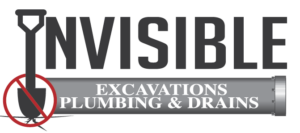How often does your home’s plumbing system cross your mind? Probably not often.
When your sewer lines are structurally sound and clear, your plumbing system is like a well-oiled machine that runs seamlessly in the background of your life.
Lately, you’ve sensed a problem, and through research or an inspection from a plumber, you find out your sewer lines have a blockage caused by either a sewer line belly or pipe channeling. Regardless of the diagnosis or what you suspect, it’s imperative to fully understand the difference between the two and get a second opinion from an experienced trenchless technician. Why?
While the differences are subtle, definitively knowing which issue your system is contending with is a must when choosing the most appropriate and cost-effective sagging sewer line repair.
What is a Bellied Sewer Line?
For optimal sewer line flow, pipes should slope (or, pitch) in a positive direction to allow gravity to drain liquids smoothly and help transport solids away without clogging. When the slope of the pipe is no longer positive, a bellied sewer line has formed.
This bend in the pipe line causes water to collect in the low area/sag.
Some liquid continues to move through the pipe, but the water/liquid that gets trapped sits idle and can begin to collect solid waste. When too much solid waste accumulates and settles in the sag, a pipeline clog develops.
What causes a bellied sewer line?
Poor planning during construction. When pipes are installed during new construction, pipes should be placed on a bedding of sand or crushed stone to prevent settling. If a pipe trench is not prepared correctly, a negative slope of the line can develop when the ground settles.
Improper support from an unstable ground. Sewer line pipes require proper ground support. For pipes that lie on unsound soil, they should be reinforced with pipe hangers. If this support is absent, sewer line pipes can bend out of shape over time. Natural environmental causes. Bellied sewer lines can form when unforeseeable events occur, such as soil-related anomalies, shifting ground, earthquakes, and mudslides.
What is Sewer Line Channeling?
Similar to a bellied sewer line, sewer line channeling is a plumbing issue where water/liquid collects in a compromised spot in the pipe. Over time, this liquid and solid waste accumulation can cause a blockage in the pipeline. Unlike a bellied sewer line, however, sewer line channeling is not the result of a negative slope. Pipe erosion is the root cause.
What causes sewer line channeling?
If your home was built around the 1970s, your water and sewer pipes may be cast iron. While this material has positives, continuous water flowing through them can cause the bottom to erode and disintegrate, allowing liquid to pool. Along with solid waste, roots, dirt, rocks and other debris can cause the plumbing blockage.
Sagging Sewer Line Repair: What Can Be Done?
To detect which issue is wreaking havoc on your sewer line, a sewer line camera inspection – a method that sends a camera through the pipes to locate and diagnose the issue – is usually effective.
However, bellied sewer lines and sewer line channeling are often misdiagnosed for each other since they can appear very similar. For this reason, it’s exceedingly advantageous to contact a licensed and experienced trenchless technician to assess your situation or to offer a second opinion.
To give a more accurate diagnosis, trenchless technicians sometimes use an additional tool called a jetter. With a jetter, solid waste and debris is blasted away – offering a clearer view of the damaged pipe.
Once the issue is correctly identified, the following repair options should then be discussed with a licensed and trained sewer line repair expert.
Sewer line belly:
When the issue is diagnosed as a bellied sewer line, there is really only one repair option: To dig up the pipe, cut out the damaged portion, and replace it with a new line. Because bellied sewer lines contend with a negative slope, these repairs must also correct the foundational issues that initially caused the bellied line. During repair, it’s also strongly advised to replace any parts of the sewer line that look like they are beginning to wear, and these sections may cause issues sooner than desired.
Pipe channeling:
When the issue is diagnosed as pipe channeling, there are a few options:
- If only a small, straight section of the pipe has eroded, slip lining is usually the most effective repair option. Slip lining is where a new pipe – that is slightly smaller in diameter – is inserted inside the eroded part. From there, grout fills the void to ensure no issues connect it to a preexisting line.
- If multiple sections of the pipe need to be relined, or if bent sections of the pipe need repaired, cured-in-place pipe (CIPP) is an effective repair option.
CIPP is a resin-impregnated liner that is pulled through the existing pipelines. It is very flexible, allowing it to bend easily around corners and harden in place. For this option, no grouting is necessary.
A Serious Issue that Invisible Excavation Can Remedy
These types of sewer line issues are serious problems that can deliver a lot of stress to any homeowner.
To get on top of the situation – and fast – both situations require a trained eye to accurately assess the issue and quickly employ the correct repair solution.
As expert plumbing and sewer line technicians with deep roots in trenchless technology, the Invisible Excavation team can help you identify your sewer line problem and deliver top-quality repair work.
Get in touch with us today to schedule a video pipe inspection or to request a second opinion.

